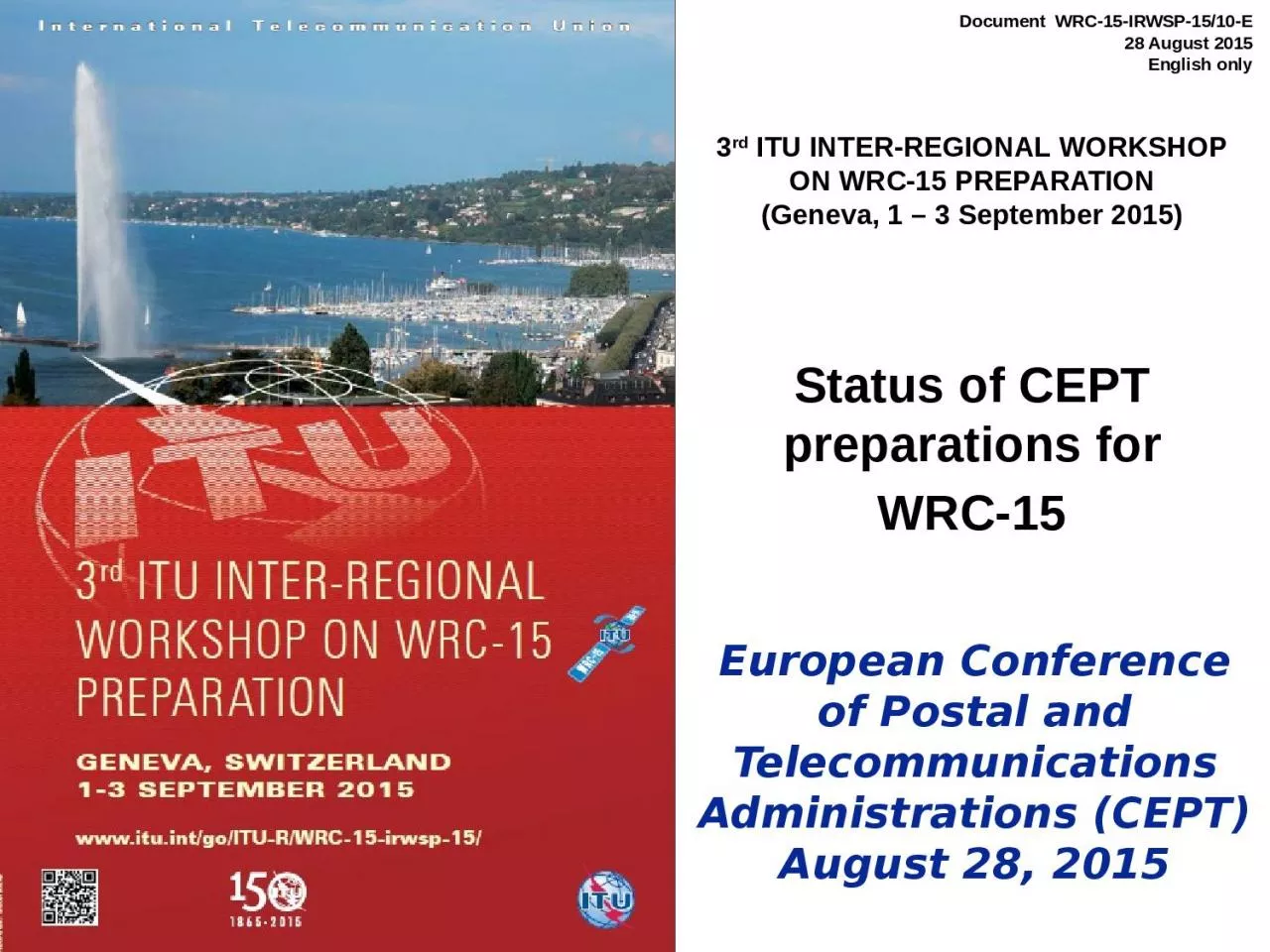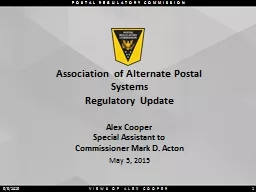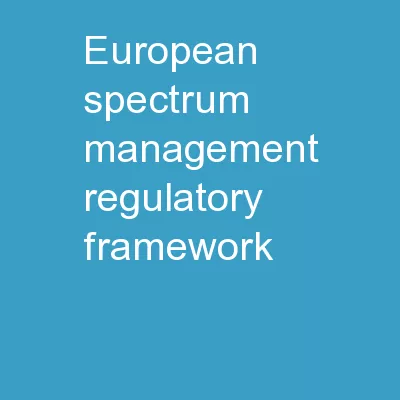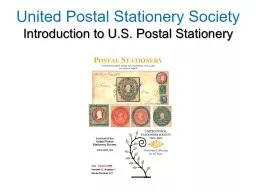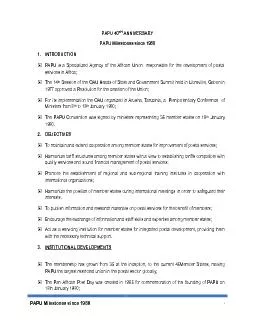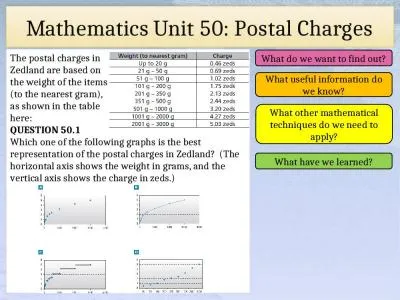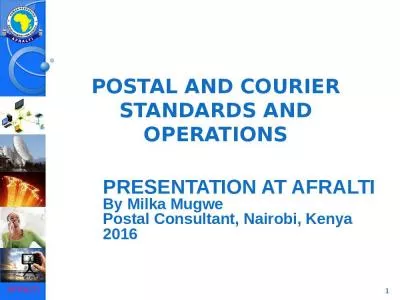PPT-European Conference of Postal and
Author : elena | Published Date : 2022-07-01
Telecommunications Administrations CEPT August 28 2015 Status of CEPT preparations for WRC15 Status of CEPT preparations for WRC15 Mr Alexander Kühn CPG15
Presentation Embed Code
Download Presentation
Download Presentation The PPT/PDF document "European Conference of Postal and" is the property of its rightful owner. Permission is granted to download and print the materials on this website for personal, non-commercial use only, and to display it on your personal computer provided you do not modify the materials and that you retain all copyright notices contained in the materials. By downloading content from our website, you accept the terms of this agreement.
European Conference of Postal and: Transcript
Download Rules Of Document
"European Conference of Postal and"The content belongs to its owner. You may download and print it for personal use, without modification, and keep all copyright notices. By downloading, you agree to these terms.
Related Documents

